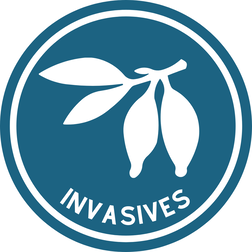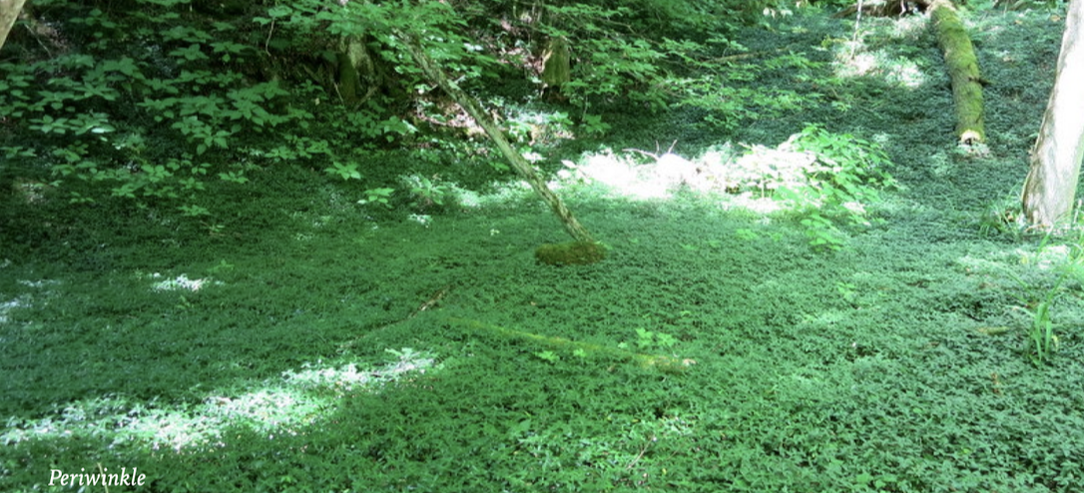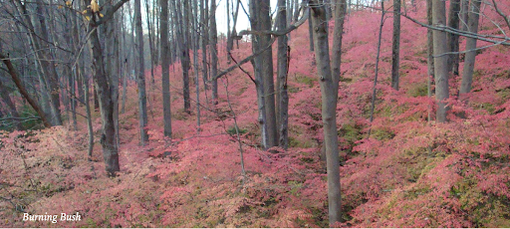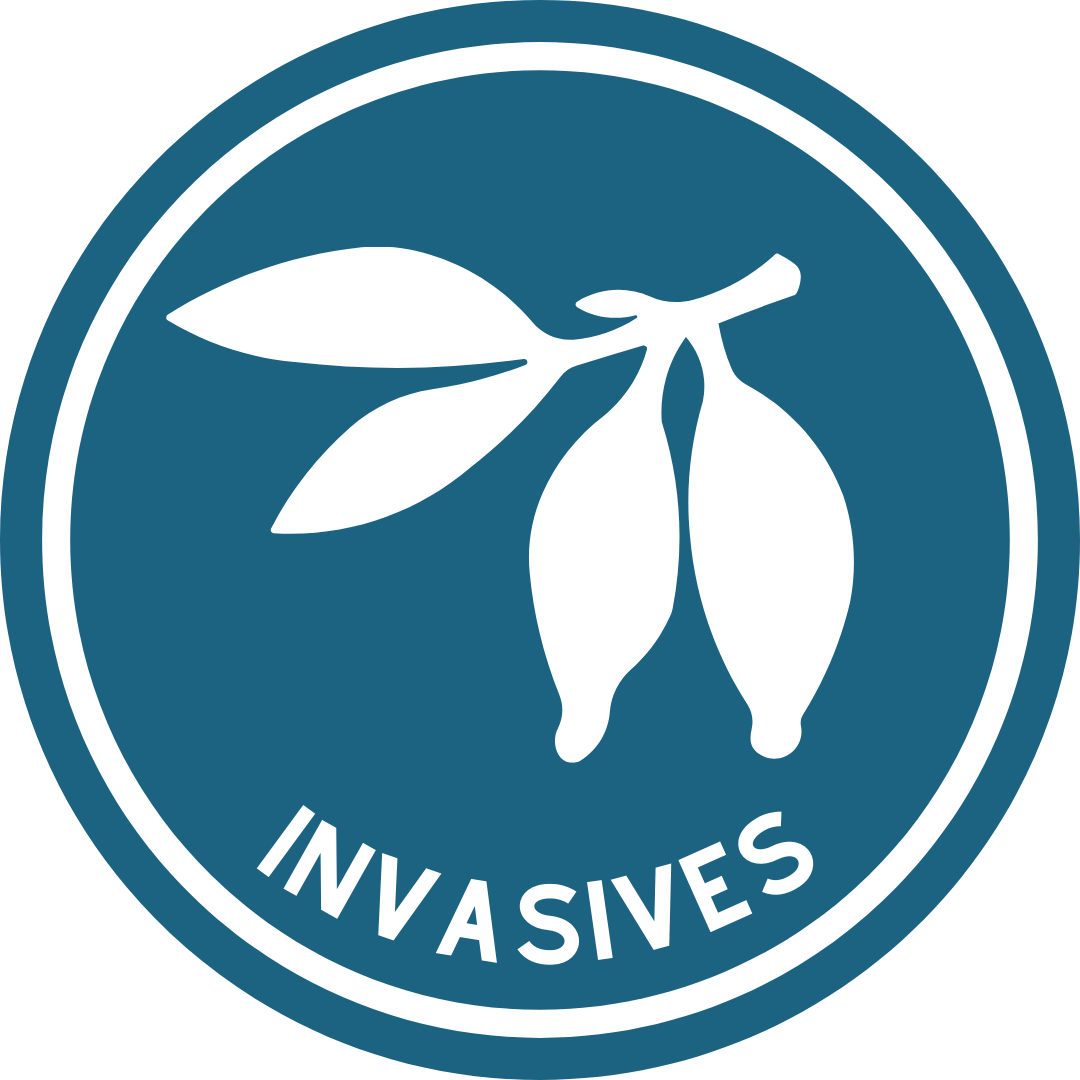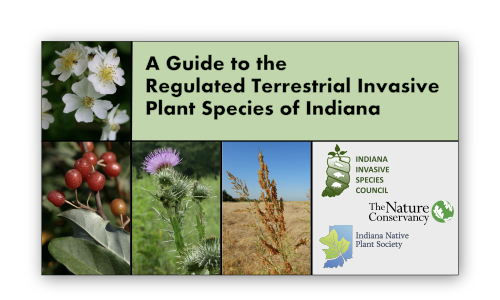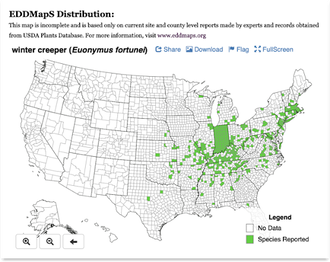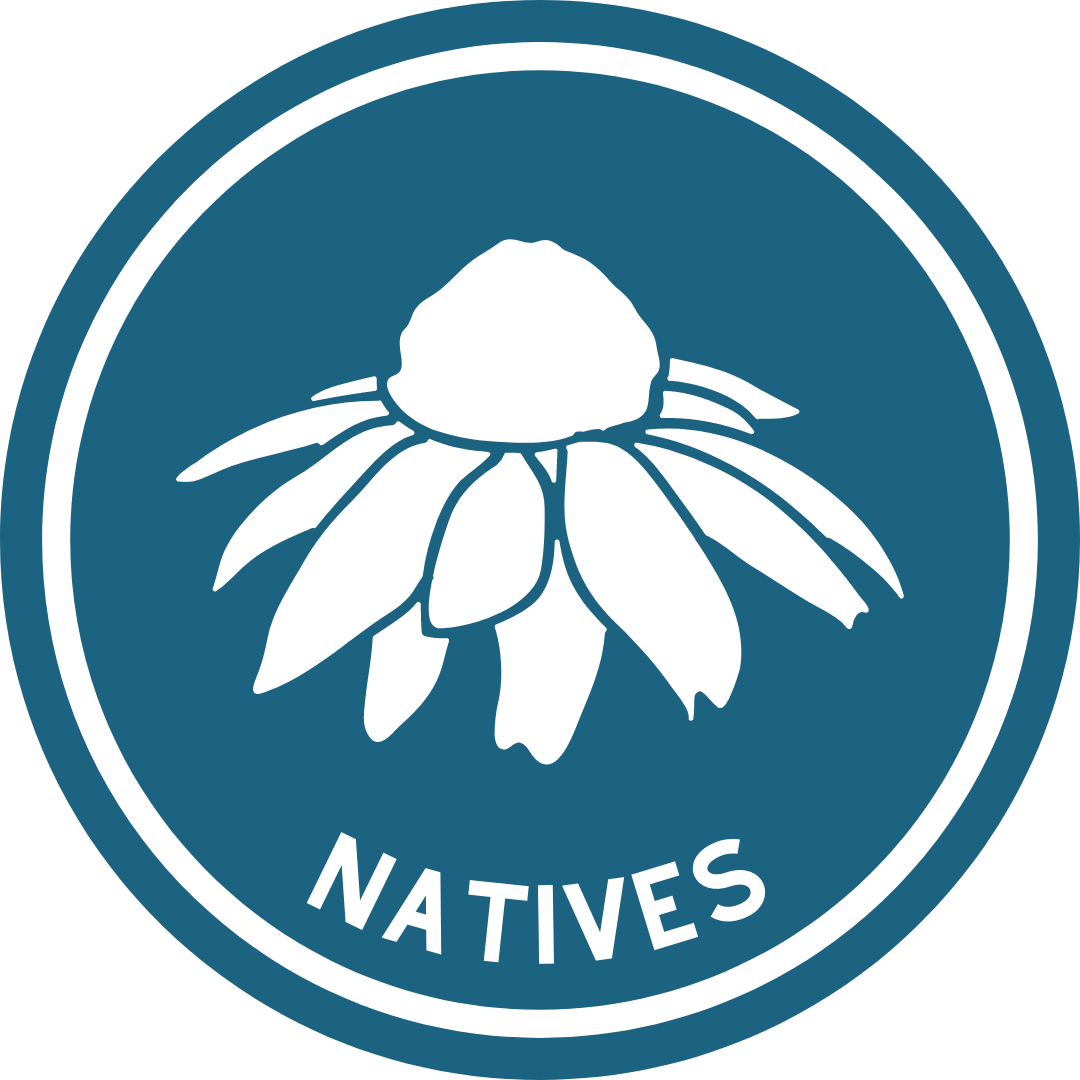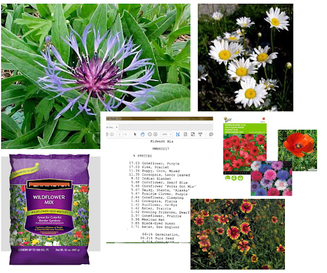Stop InvasivesWhat is an invasive species?
Invasive species are non-native and cause harm to the environment, human health, and the economy. The proliferation of invasive species in an ecosystem disrupts the complex and critical relationships that our native species have with their environment and other organisms and is responsible for degrading and destroying thousands of acres of Indiana’s native plant communities. Shockingly, 83% of invasive plants that are harming Indiana’s naturally occurring green-spaces come from our own home landscapes. Gardeners, not knowing the danger that some non-natives plants pose, have unintentionally purchased, planted and set loose this serious threat to our natural areas. Our goal is to educate the community about the harmful nature and negative impacts of invasive species and ultimately to inspire and spur corrective action by the citizens of Hamilton County. |
|
SOME BACKGROUND ON INVASIVE PLANTS
Not all non-natives plants are invasive, in fact, most are not. However, the majority of all non-natives (whether invasive or not) provide little ecological value in comparison to natives and can become invasive over time. It’s unquestionably better for the environment to avoid planting non-natives whenever feasible! Some non-native species, uninhibited by environmental conditions and their natural predators, are able to reproduce and spread, becoming invasive and causing environmental destruction in their path. The vast majority of invasive plant species have been introduced to the US through the horticultural trade industry and escaped into the wild from our home landscapes. Astonishingly, 83% of the invasive plants that are found in naturally occurring green spaces come from our own gardens. |
WHERE DO THEY COME FROM?
Some species were introduced accidentally in packing material, as crop contaminants, in shipping containers or from the cargo holds of ships. However, many invasive species have been brought here deliberately. We grow non-native species for food, as ornamentals in gardens, for their usefulness in feeding wildlife, or controlling our environment in some way (from EDDMAps Invasive Species Mapping Handbook). The unforeseen consequences of this can often be tragic:
|
|
WHAT MAKES THEM SO INVASIVE?
Invasive plants species often exhibit the following common characteristics:
|
Indiana Invasive Species List
The Indiana Invasive Species Council (IISC) was established by the state legislature to enhance the ability of government agencies to detect, prevent, monitor, and manage new and long established invasions, as well as to increase public awareness about invasive species.
In 2009, the IISC appointed the Invasive Plant Advisory Committee to develop a comprehension list of invasive plants and to assess and rank each species as low, medium, or high as well as identify other species that need monitoring for potential invasiveness.
The Indiana Invasive Species Council (IISC) was established by the state legislature to enhance the ability of government agencies to detect, prevent, monitor, and manage new and long established invasions, as well as to increase public awareness about invasive species.
In 2009, the IISC appointed the Invasive Plant Advisory Committee to develop a comprehension list of invasive plants and to assess and rank each species as low, medium, or high as well as identify other species that need monitoring for potential invasiveness.
|
The Indiana Invasive Species List was then used as the basis for regulating highly invasive plants in Indiana and led to the creation of the “Terrestrial Plant Rule” which went into effect in April of 2020. Currently there is no mandate to eradicate existing invasive plantings in nurseries, landscapes or forested areas.
The Terrestrial Plant Rule (312 IAC 18-3-25) designates 44 species of plants as invasive and makes it illegal to: sell, gift, barter, exchange, transport, or introduce these plants in the State of Indiana. |

